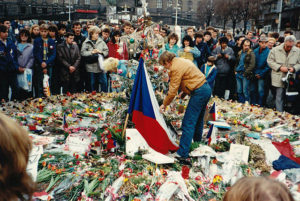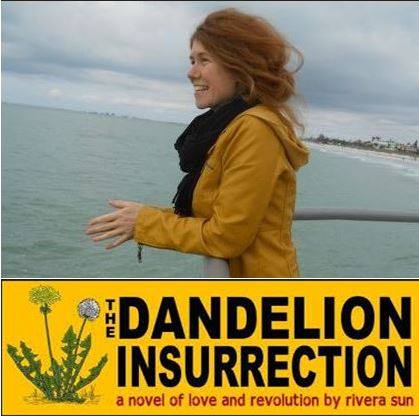 Czechoslovakia’s Velvet Revolution in 1989 — Campaigners sought to end the Soviet occupation of the country, as well as shifting from communist rule. They wanted to remove the laws of state-mandated censorship and demanded free elections.
Czechoslovakia’s Velvet Revolution in 1989 — Campaigners sought to end the Soviet occupation of the country, as well as shifting from communist rule. They wanted to remove the laws of state-mandated censorship and demanded free elections.
Just eighteen months before the November nonviolent revolution, Czechoslovakians organized their first public mass demonstration since 1969. Roman Catholic groups seeking religious freedom organized a Candle Demonstration, and the event on March 25th, 1988, was attended by more than 5,000 Slovaks. Police forces responded by shooting protesters with water cannons and beating them with sticks and batons.
The fall of the Berlin Wall on November 6th, 1989, became a galvanizing event as Czechs and Slovaks watched Soviet control of Eastern Europe begin to crumble. Ten days later, on November 16th, peaceful student demonstrators marched from the universities to the Ministry of Education to present demands for educational reform.
The next day, November 17th, 50,000 people came out to protest in Prague. Riot police came to break up the crowds, blocking escape routes and beating up the demonstrators. A rumor, which later proved false, claimed that one student had been killed. That evening, students and theater actors decided to go on strike. On the eighteenth, all shows and rehearsals stopped in the theater district. The stages opened their doors for community discussions and the Civic Forum was established by dissident playwright, and future president, Vaclav Havel.
The Global Nonviolent Action Database reports that, “Homemade posters and proclamations were posted in public spaces, and actors read a proclamation by the students and artists to audiences, calling for a general strike on 27 November. The next day, members of artistic and literary associations joined the strike, as well as actors in Bratislava, Brno, and Ostrava. In addition, about 500 Slovak artists, scientists, and leaders met at the Art Forum in Bratislava, denouncing the attack against the students in Prague. While there, they formed the Public Against Violence organization, which became the leading force behind the opposition movement in Slovakia. In addition, dissident playwright Vaclav Havel helped establish the Civic Forum, which called for the dismissal of top officials responsible for the violence on 17 November, the release of all political prisoners, and political and economic reforms.”
By November 20th, students and actors agreed to go on permanent strike until Communist officials stepped down. Numerous mass demonstrations broke out in Prague and other parts of the country, sometimes exceeding 200,000 people. Over the next week, nonviolent actions intensified throughout many sectors of society. Television staff threatened to strike over government censorship of their coverage of the demonstrations. The Minister of Defense declared that the military would not break up the protests. Czechoslovakia TV and Radio joined the general strike. The editorial staff of the major Communist newspaper joined the movement. Two members of the riot police apologized for their November 17th actions to a crowd of hundreds of thousands.
On November 27th, as planned, a nationwide two-hour general strike took place at noon. Nearly three quarters of the entire population of Czechoslovakia participated. The next day, the prime minister agreed to form a new coalition government and overturn the sections of the Constitution that guaranteed Communist rule. The transition of the government took place in stages. As the Global Nonviolent Action Database reports, “In early December, Communist leader Gustav Husak appointed the first largely non-Communist government in Czechoslovakia since 1948, and eventually resigned. Two weeks later, Alexander Dubcek became the first speaker of the federal parliament, and on 29 December 1989 Havel was elected president of the republic. Free elections were held in June 1990.”
Learn more about the Velvet Revolution here.
http://nvdatabase.swarthmore.
This article is from Rivera Sun’s book of nonviolent histories that have made our world. Click here for more information.
______________________________________

Rivera Sun is a change-maker, a cultural creative, a protest novelist, and an advocate for nonviolence and social justice. She’s a love-based revolutionary and the author of The Dandelion Insurrection, The Way Between and ten other fiction, non-fiction and poetry books. Her essays and writings are syndicated by Peace Voice, and have appeared in over a hundred journals nationwide. Rivera Sun speaks and facilitates workshops in strategy for nonviolent change across the country and around the world. She connects the dots between the issues, shares solutionary ideas, and inspires people to step up to the challenge of being a part of the story of change in our times. www.riverasun.com